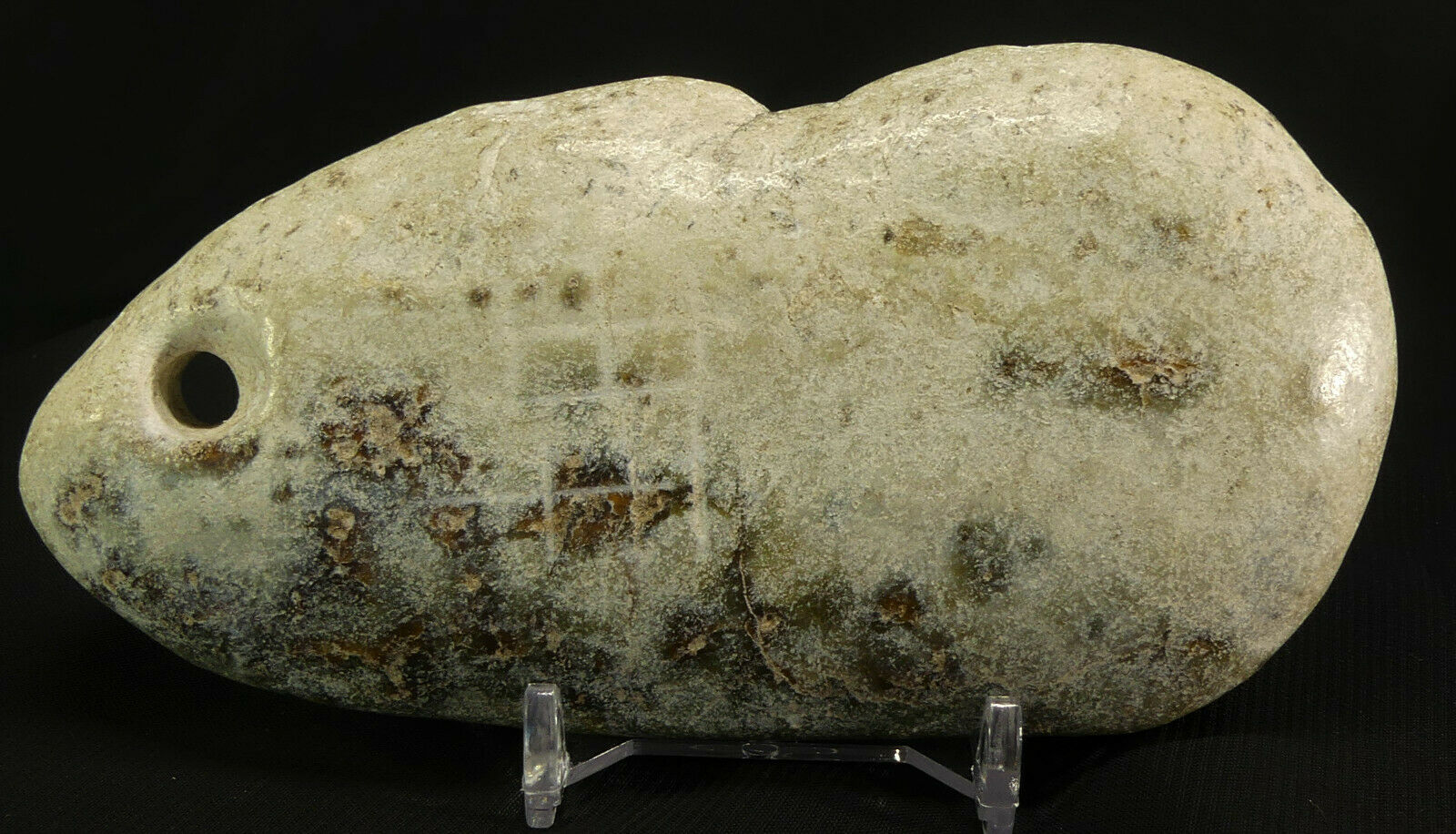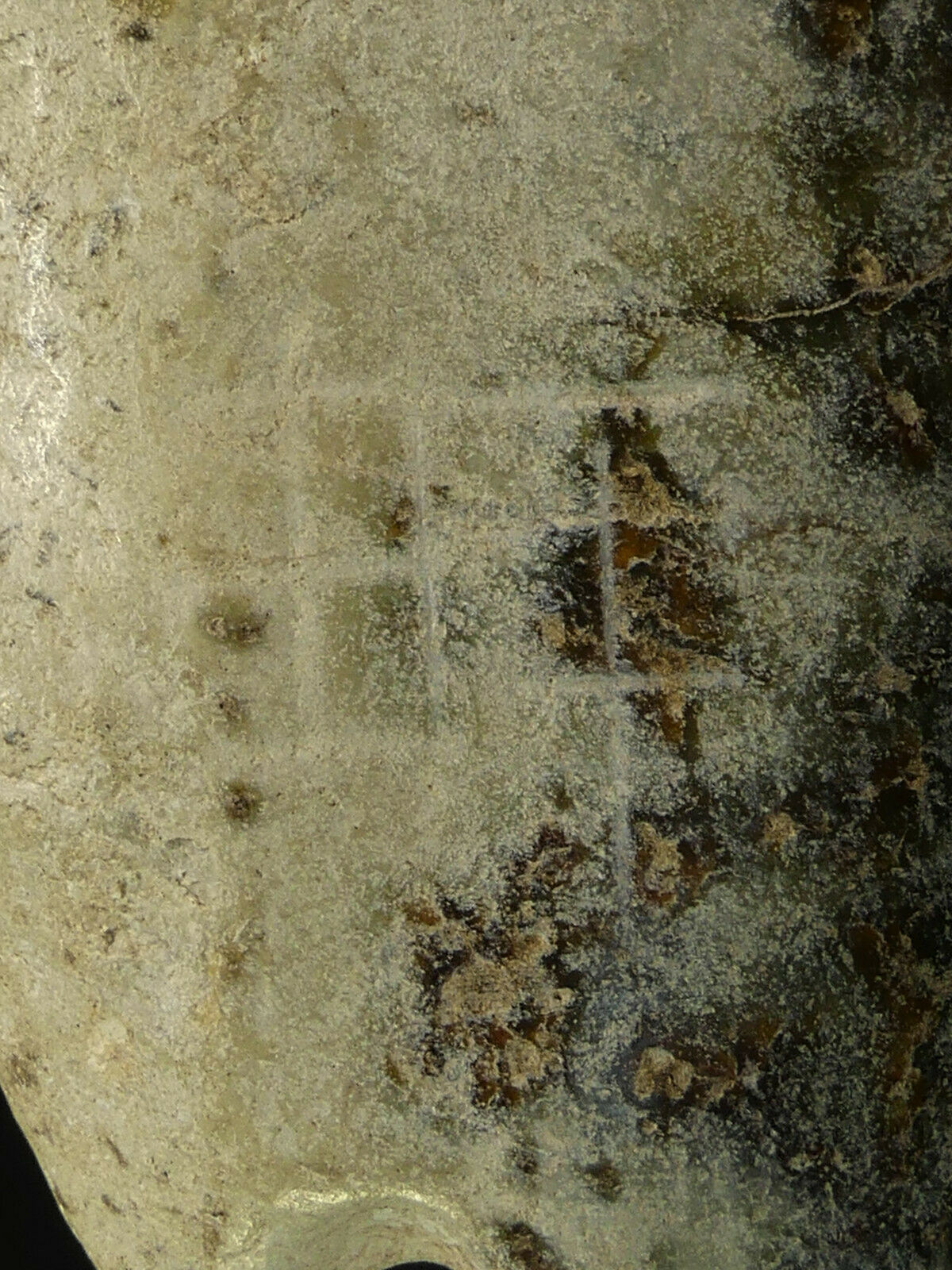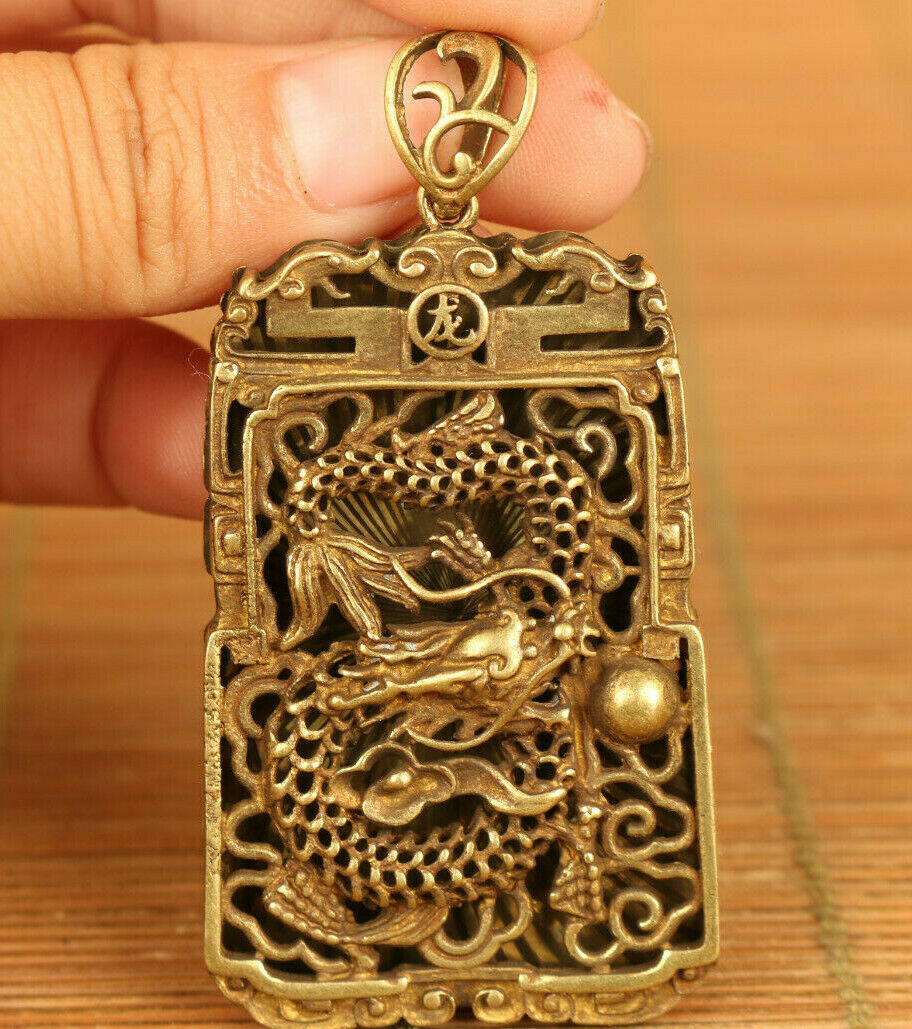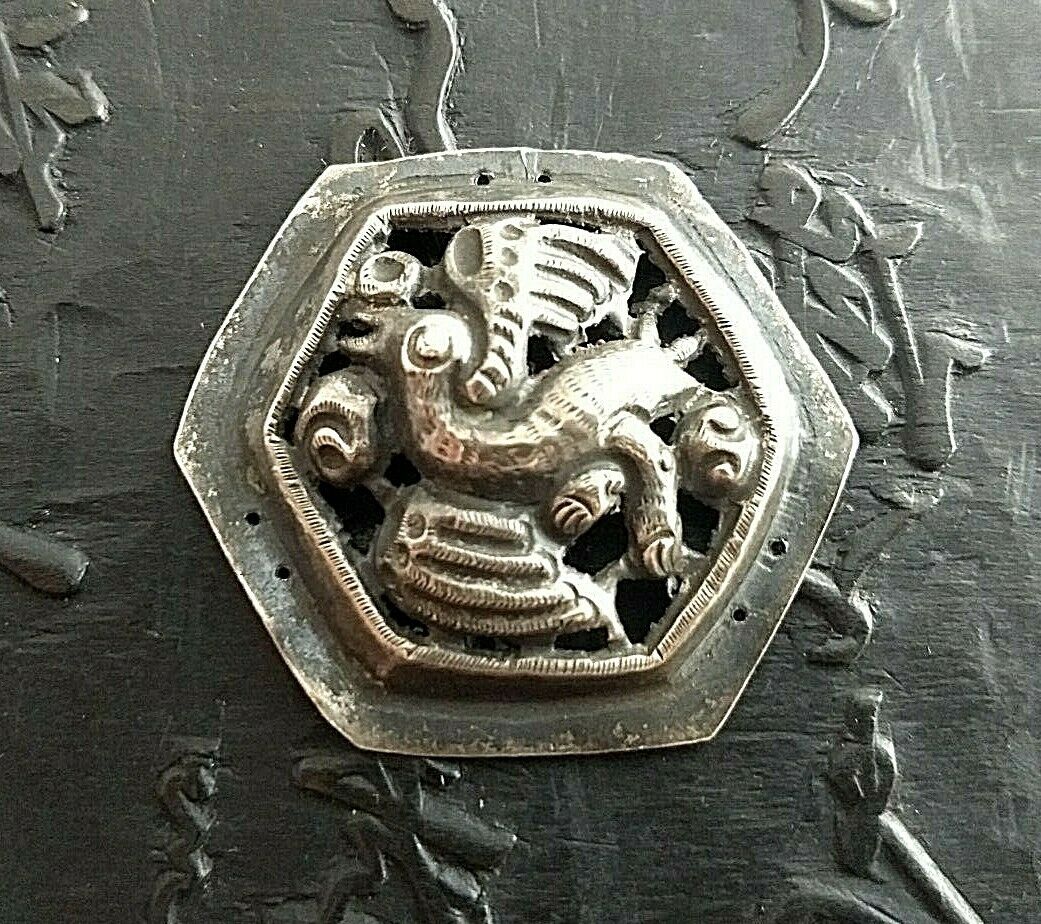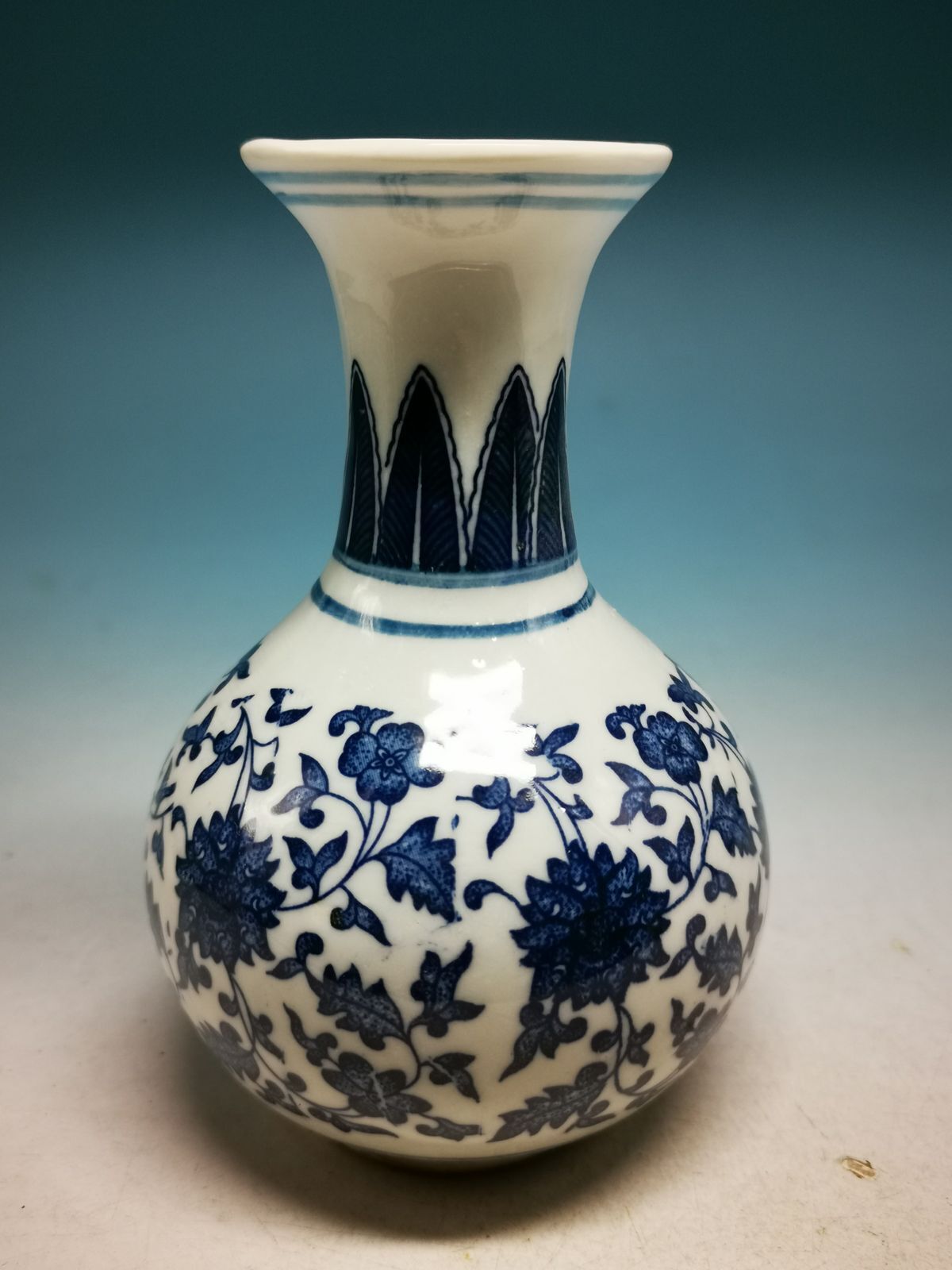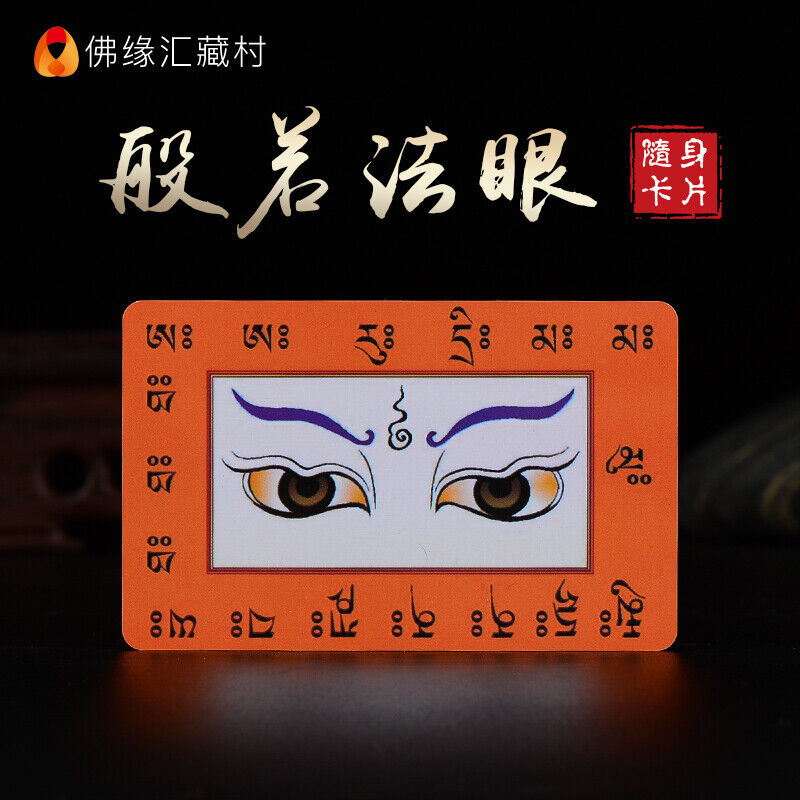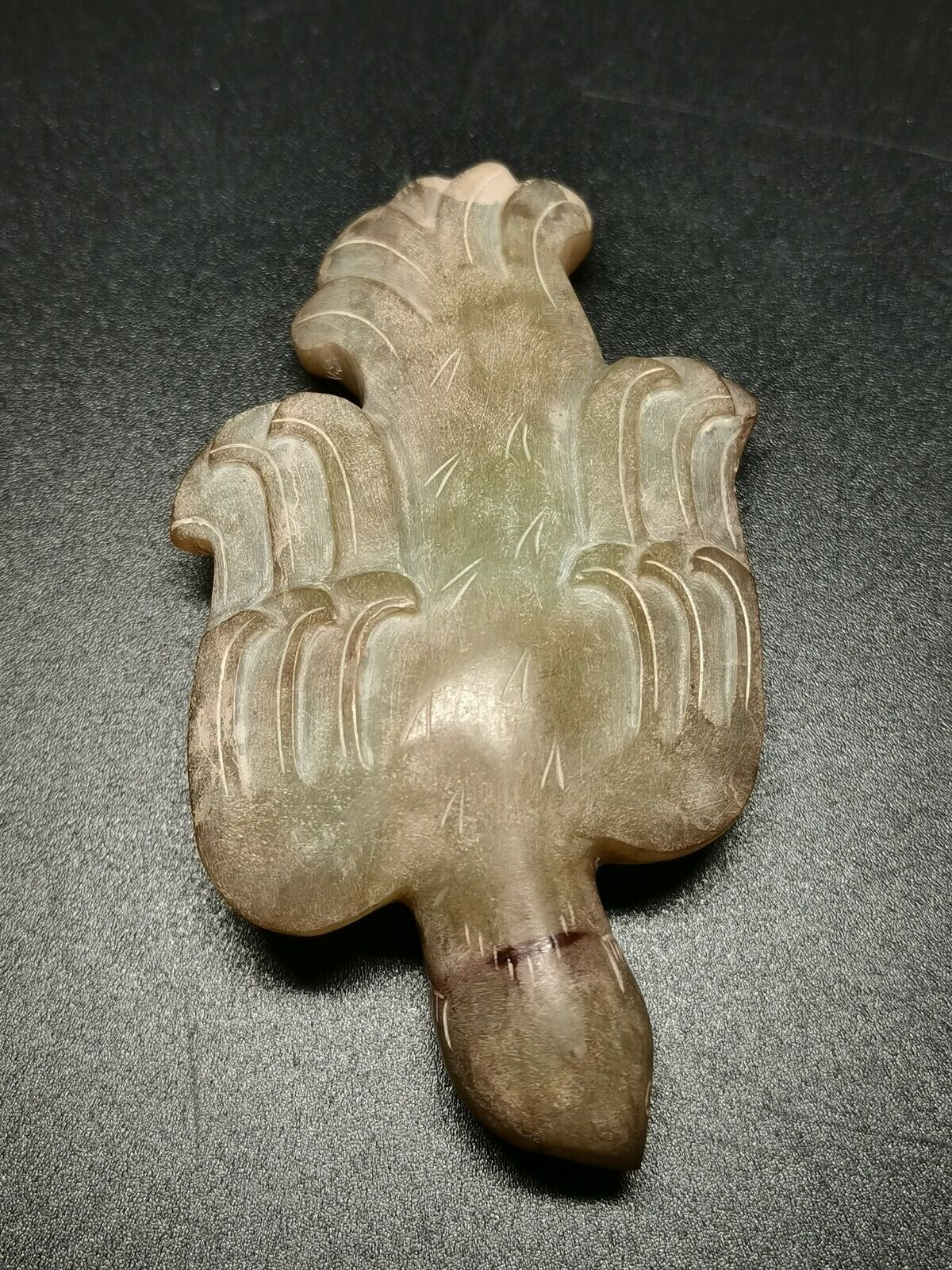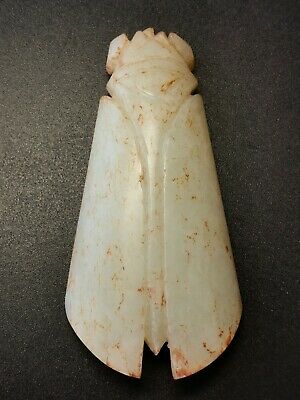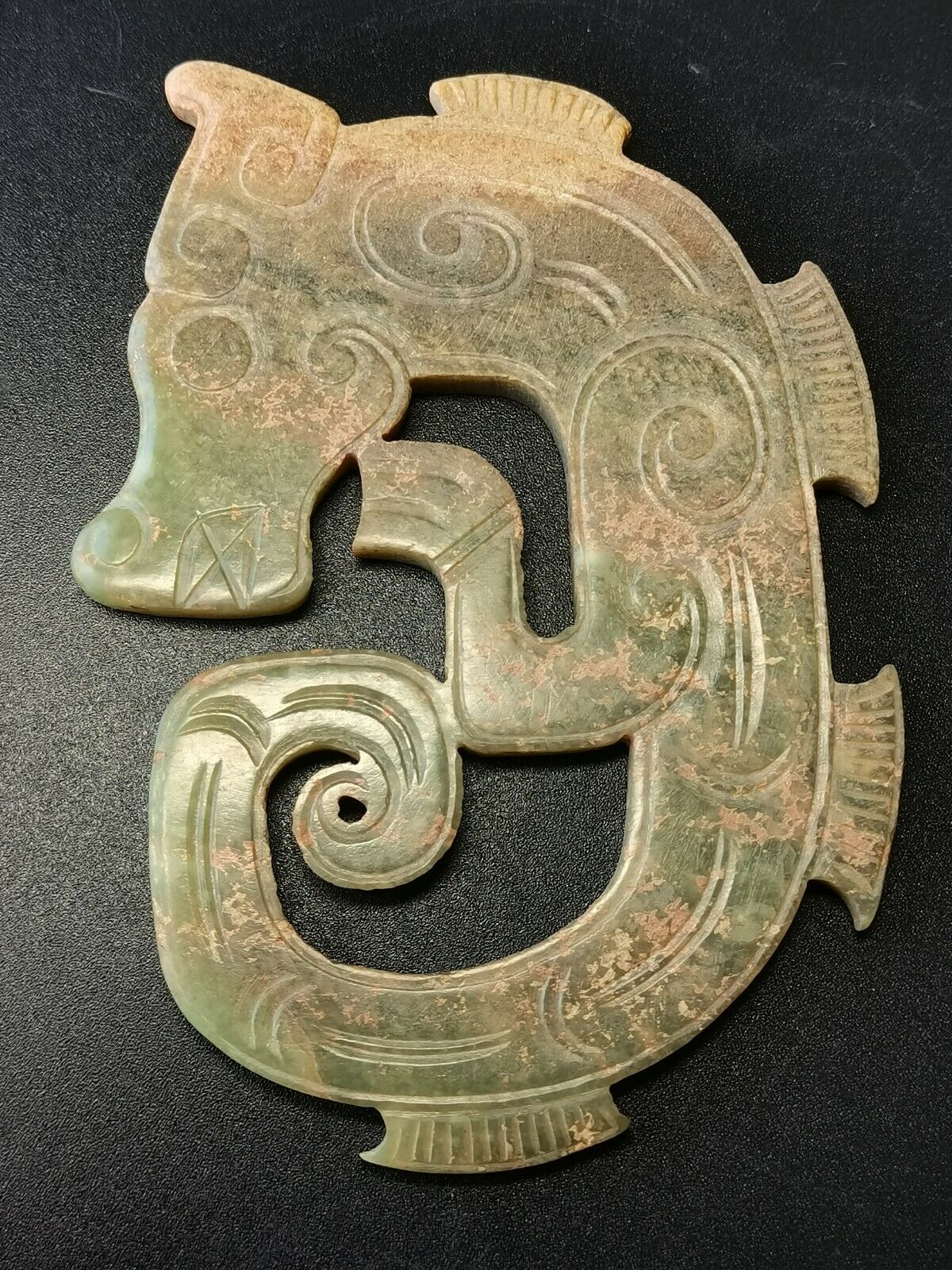-40%
RARE Ancient Chinese Hongshan Jade "Devil Fish Eel" Amulet/Pendant w/Translation
$ 5253.6
- Description
- Size Guide
Description
ANCIENT CIVILIZATIONSArtifacts, Antiques & Fine Collect
i
bles
Neolithic Jade Eel (
Mányú
) Pendant/Amulet
English Translation of 20+
Inscription
Characters
“Slithering Devil Fish”
Hongshan Culture
4500 BC—2250 BC
NOTE:
William D. Houghton, the President of ANCIENT CIVILIZATIONS
, a State of Washington Licensed Business,
assumes all responsibility for the information contained in this description and for the English translation and transcription of the ancient Chinese graphic characters.
Furthermore, I prohibit the further dissemination of this information in any written, video, or electronic format without my expressed, written approval.
Thank You!
SUMMARY
Item:
Chinese Neolithic Asian Swamp Eel Pendant/Amulet
Material:
Jade—cream colored
Type:
Pendant/Amulet
Country:
China
Dynasty/Culture:
Hongshan Culture
Est. Date:
4500 BC—2250 BC
Measurements:
·
Height:
4.96” (126mm)
·
Width:
2.51” (64mm)
·
Thickness:
.76” (19mm)
·
Weight: 9.1 oz. (258 gr.)
NOTE:
These items offered for sale by Ancient Civilizations are unconditionally guaranteed authentic. They were legally imported to the United States years ago and are legal to sell and own under U.S. Statute Title 19, Chapter 14, Code 2611, Convention on Cultural Property.
This jade pendant/amulet is approximately 5,000-years-old and the characters on one side of amulet are literally what the ancient Chinese called the “Slithering Devil Fish.” We now call them an Asian Swamp Eel or in Chinese
鳗鱼
(mányú).
The eel was a common food source in Neolithic China and is still consumed today in China, Japan, and many parts of Asia.
The ancient Hongshan culture called it the “Slithering Devil Fish” as the eels' blood is poisonous, which discourages other creatures from eating them. A very small amount of eel blood is enough to kill a person, so raw eel should never be eaten. Their blood contains a toxic protein that cramps muscles, including the most important one, the heart.
However, cooked eel is safe to eat and is considered a delicacy in Asia.
This lovely jade “Devil Fish” has perhaps 20+ pictographs on both side of the eel that document the animal sacrifices the sons and grandsons made to the Ancestors on behalf of their departed father/grandfather.
Therefore, this jade eel was likely part of the ritual offerings made by the Sons at a temple above the tomb of their father.
{See details below.}
DETAILS
For millennia, fish were an important motif in Chinese mythology. There are various myths and legends involving fish as in Chinese the word for "fish",
yu
, is a homophone for "abundance" and "affluence."
Because the Chinese character for fish (yu
鱼
) is pronounced the same as the Chinese character for surplus (
yu
余
), the fish symbol is frequently used to symbolize the wish for "more" in the sense of good luck, good fortune, long life, or children.
The eel pendant has a suspension hole on the very top of the amulet.
Archaeologists classify these holes a “double-bevel holes,” which were one of the common type of hole made by the Hongshan Culture.
It was necessary to drill from both sides with a hollow, bone tube that would be dipped into abrasive and then rotated rapidly against the stone to affect a ring-form type of hole, leaving the solid core intact.
Therefore, the meeting place of the two borings is not true to a single, straight channel and a curved remnant ridge that is not ground or polished-out remains at the common junction.
The center core was often snapped off by tapping or pushing the center core to one side and thus completing the long hole.
ENGLISH TRANSLATION OF CHARACTERS
Note:
I assume all responsibility for the information contained in this description and for the English translation and transcription of the ancient Chinese graphic characters.
Furthermore, I prohibit the further dissemination of this information in any written, video, or electronic format without my expressed, written approval.
Thank You!
There are perhaps 20+ ancient pictographs/characters incised and percussively pecked onto this jade eel.
These pictographs are some of the earliest written symbols ever used in ancient China.
To the best of my ability, I have attempted to translate the pictographic symbols I can see clearly enough.
Any errors are of course mine alone.
There are two, faintly incised pictographs located just below the suspension hole/eye of the eel.
They each measures about 26mm tall.
The two Neolithic characters look sort of like the English letters “
I
” and “#.”
They appear to be a Neolithic version of the modern Chinese Radical # 195 “
Shan
” and it this ancient version literally means “Slithering Devil Fish.”
In modern Mandarin Chinese, it refers to the
Asian Swamp Eel or in Chinese
鳗鱼
(
mányú
).
(See photos # 5-6}
Next to the
Devil Fish
characters, there are an additional 10 or so much smaller pictographic characters that have been percussively pecked in the jade and that have turned tan in color and surrounded by a black color from the minerals that have leached into the jade.
The largest pictograph of this side measures about 12mm tall and is that of a standing Son with his arms raised as he offers sacrifices to the Ancestors in Heaven (
Tian
in Chinese).
Next to his right arm, is an even smaller figure only about 6mm tall that looks like a tiny frog.
It is in fact a grandson that is too small to stand, but is still present at the ritual to offer his prayers for his grandfather.
(See photo # 7}
On the same side, there is another pictograph of a son sacrificing a large animal with an axe.
(See photo # 8}
I am unable to decipher the other characters on this side, as they are not clear enough to make a positive translation.
Located around and even on the inside surfaces of the eye holes and some characters that are less than < 2mm tall!
Holes were considered gateways or portals to Heaven or “
Tian
” in Chinese.
They are so very small and were only meant for the eyes of the Ancestors, as human eyes were not worthy to read them.
(See photo # 9}
On the reverse side of the fish amulet there is a horizontal row of an estimated 20+ characters that are engraved in very low relief, but they are so faint that I cannot see them clearly enough to translate them.
It is possible that they provide the name of the deceased.
(See photo # 11}
In the middle of the jade eel on the reverse side, there is a 10mm long, brown image of what appears to be a sacrificed oxen.
In this macro image, you can see his horns and his two rear legs portrayed as lying flat on the ground after been sacrificed by the son, who is less than 2mm tall and is portrayed standing to the left of the beast he has just killed, with a flint axe in his hand.
(See photo # 12}
Based upon similar Neolithic jade amulets made during the Hongshan Culture over 5,000-years-ago, I believe these all these symbols/characters document the sacrificial offerings and prayers that were made by the Sons and Grandsons on behalf of their departed father/grandfather.
During such ritual offerings, the sons and grandsons would offer wine, sacrificed animals, jade, money, and bronze items—all the things the departed would need in his/her journey to the afterlife.
REFERENCES:
·
The Ancestral Landscape
, David N. Knightley, 2000
·
Chinese Characters,
Dr. L. Wieger, S.J.
·
The Great Bronze Age of China
:
An Exhibition from the People’s Republic of China
, edited by Wen Fong, 1980
·
Metropolitan Museum of Art, NYC
·
Ancient Chinese Warfare
, Ralph D. Sawyer, Mei-chün Sawyer
·
Archaeology
, Archaeological Institute of America, Feb/March 2015
·
Shanghai Museum, China
·
Museum of Chinese History, Beijing, China
·
National Palace Museum, Taipei, Taiwan
·
British Museum
·
Smithsonian Museum, Sackler & Freer Gallery, WDC
NOTE:
Please note that there are hundreds of modern reproductions for sale on eBay from China and the USA, but nearly all are modern fakes, and some aren’t even jade.
So please ensure that you are bidding on the real thing if that is what you want before you bid.
If you only want a reproduction piece for a few dollars that is simply fine, just be sure you are getting the quality and authenticity you are paying for.
Please examine the macro photos carefully as they are part of the description.
The stand and the ruler are not part of the auction, just included to give you a better perspective.
And please ask any questions before you buy.
International Buyers are responsible for all import duties, import taxes, shipping charges and insurance costs.
International Returns are
NOT
accepted.
Note:
Please ask any questions you may have before you bid! Thanks for Looking!
